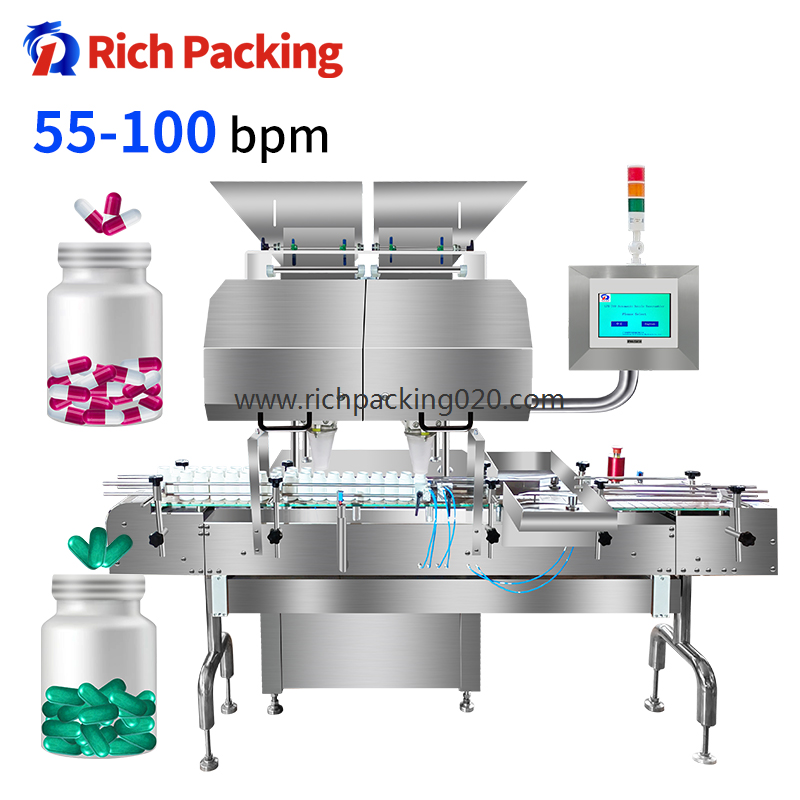HOT PRODUCTS
Details
 Home
> NEWS
> Industry News > Details
Home
> NEWS
> Industry News > Details
Tablet production process
Tablet production process
1. Wet granulation:
A. Preparation of operating procedures: main drug specifications and dosage, excipients and dosage, detailed methods and machinery for preparing granules, drying temperature, tablet punch specifications, finished product weight, color, appearance, hardness, disintegration time limit, dissolution rate, etc.
B. Preparation and processing of raw materials: Raw and auxiliary materials must be identified before use, content determination, drying, crushing, sieving, etc. before they can be put into production; the fineness of raw materials is generally about 80-100 mesh or finer.
C. Weighing and mixing: Weigh the raw and auxiliary materials according to the prescription amount. Because the specific gravity of the powder is different, first sieve it with a coarser sieve for 1-2 times, mix it initially, and then sieve it with a fine sieve to make it full. Mixed; highly toxic or trace elements should be taken from 120-150 mesh fine powder, first mixed with some auxiliary materials or dissolved in a suitable solvent, absorbed with a small amount of auxiliary materials, mixed by equal amount of addition method, and then sieved once with 100 mesh sieve Then, it is thoroughly mixed by sifting through an 80-100 mesh sieve for 1-3 times.
D. pellets:
2.Dry granules before tableting:
A. whole grain Generally choose 12 mesh-20 mesh whole grain
B. Add volatile oil and volatile drugs: it is best to add some fine powder which is sieved out after the lubricant and particles are mixed, mix well and mix with all dry particles to avoid uneven mixing of lubricant and generate spots; The 80-mesh sieve can be used to sieve out the appropriate amount of fine powder from the granules, and the volatile oil is absorbed and added to the dry granules to be mixed. If the volatile matter added is solid, it is first dissolved with ethanol, or mixed with other components, ground and eutectic, and then sprayed on the granules. Mix well and store in a closed container for several hours to make it penetrate uniformly in the particles. Otherwise, the volatile oil will adsorb on the surface of the particles and produce cracks during tableting.
C. Add lubricant and disintegrant: Generally, the lubricant is sieved with fine sieve, often added during sieving; the disintegrant is first dried and sieved, then slowly added to the dry granules, thoroughly mixed, and displaced in the container. Sealed, compressed after sampling inspection.
3. Dry pressing: a method in which a drug powder is mixed with a suitable auxiliary material and directly compressed without granulation. When the drug dose is small, it can be directly compressed after being mixed with a large amount of excipients with good fluidity and compressibility. The commonly used auxiliary materials for powder direct compression are:
A. dry binder, microcrystalline cellulose, powdered sugar, carboxymethyl cellulose, calcium hydrogen phosphate dihydrate, spray dried lactose, etc.; microcrystalline cellulose can be good pressure Sexually and rapidly disintegrating;
B. Glidant, micro-silica gel (white carbon black): large specific surface area, good fluidity, great adhesion to drugs, dosage 0.15-3%; Glue, spherical mist polymer, large surface area, good compressibility, good adhesion;
C. disintegrant, dry starch, microcrystalline cellulose, sodium carboxymethyl cellulose, etc.;
D. lubricant, 1% hard Magnesium citrate or 3-5% talc powder; when the powder is directly compressed, an electromagnetic oscillator needs to be installed on the hopper to allow the powder to be filled into the die hole quantitatively. In addition, the dust squeegee is required to be tightly combined with the die table. Increase the pre-pressing process, slow down the speed of the car, extend the pressure time and other measures to overcome the shortage of powder tableting.
E. Blank granule method: If the tablet contains a drug that is unstable to moist heat and has a small dose, the excipients and other drugs that are stable to damp heat can be first granulated by wet granulation, dried and granulated, and then not resistant to damp heat. The drug is mixed with the granules and then compressed. Hydrocortisone acetate tablets, 48 g of lactose, and 110 g of starch were first made into granules with 7% starch slurry. 20 g of hydrocortisone acetate and 1.6 g of magnesium stearate were mixed, and the mixture was uniformly mixed with 138.4 g of the blank particles, followed by tableting. Each tablet contains 20 mg of the main drug.





